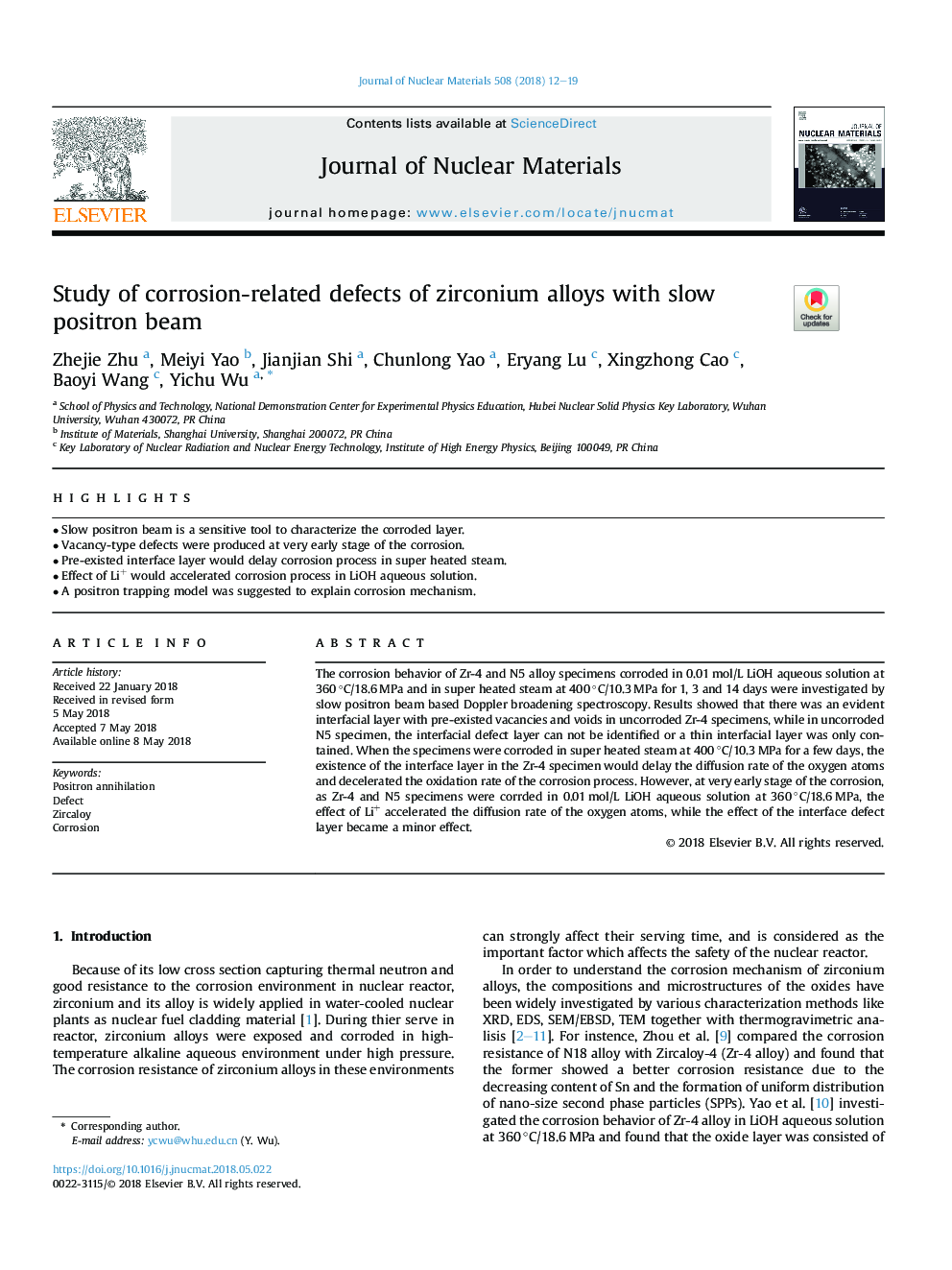| Article ID | Journal | Published Year | Pages | File Type |
|---|---|---|---|---|
| 7962993 | Journal of Nuclear Materials | 2018 | 8 Pages |
Abstract
The corrosion behavior of Zr-4 and N5 alloy specimens corroded in 0.01â¯mol/L LiOH aqueous solution at 360â¯Â°C/18.6â¯MPa and in super heated steam at 400â¯Â°C/10.3â¯MPa for 1, 3 and 14 days were investigated by slow positron beam based Doppler broadening spectroscopy. Results showed that there was an evident interfacial layer with pre-existed vacancies and voids in uncorroded Zr-4 specimens, while in uncorroded N5 specimen, the interfacial defect layer can not be identified or a thin interfacial layer was only contained. When the specimens were corroded in super heated steam at 400â¯Â°C/10.3â¯MPa for a few days, the existence of the interface layer in the Zr-4 specimen would delay the diffusion rate of the oxygen atoms and decelerated the oxidation rate of the corrosion process. However, at very early stage of the corrosion, as Zr-4 and N5 specimens were corrded in 0.01â¯mol/L LiOH aqueous solution at 360â¯Â°C/18.6â¯MPa, the effect of Li+ accelerated the diffusion rate of the oxygen atoms, while the effect of the interface defect layer became a minor effect.
Related Topics
Physical Sciences and Engineering
Energy
Nuclear Energy and Engineering
Authors
Zhejie Zhu, Meiyi Yao, Jianjian Shi, Chunlong Yao, Eryang Lu, Xingzhong Cao, Baoyi Wang, Yichu Wu,
